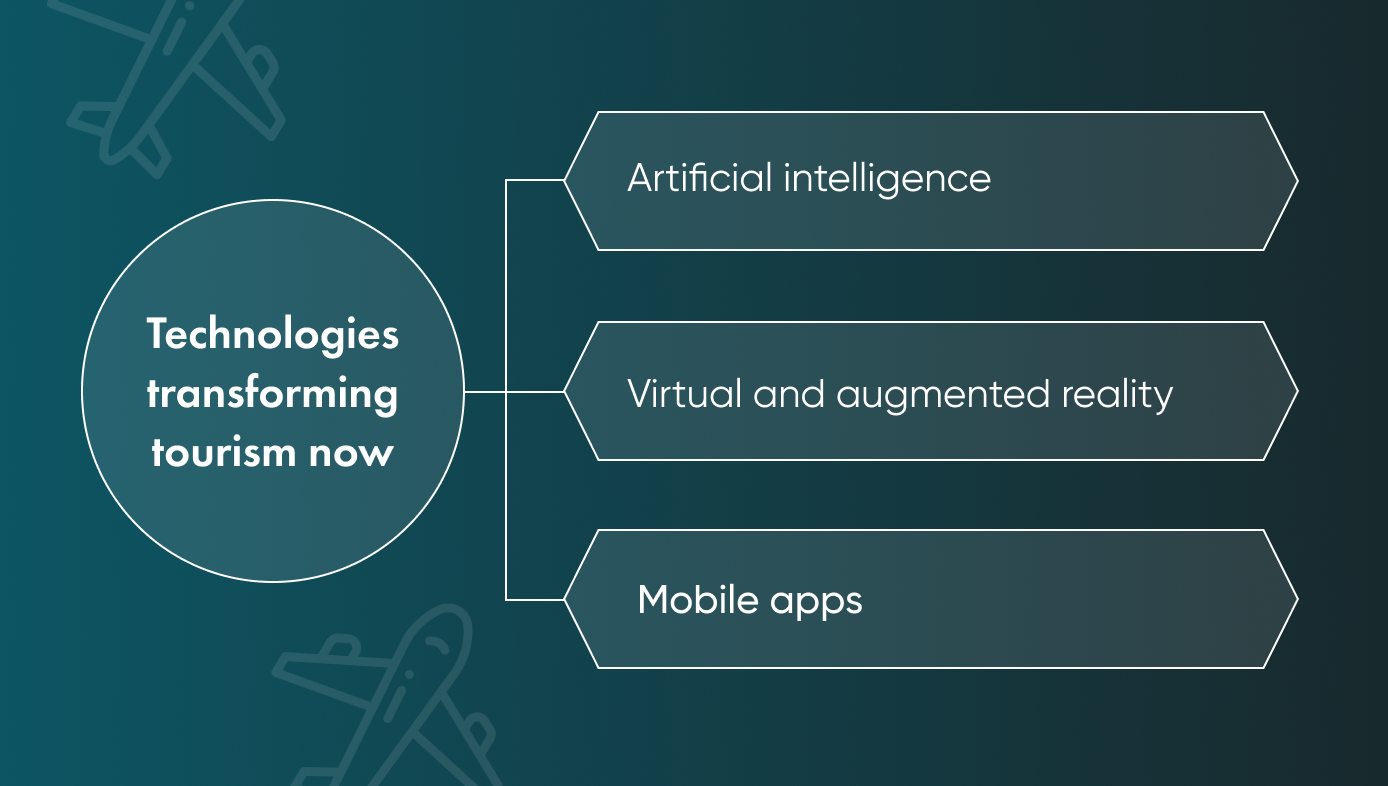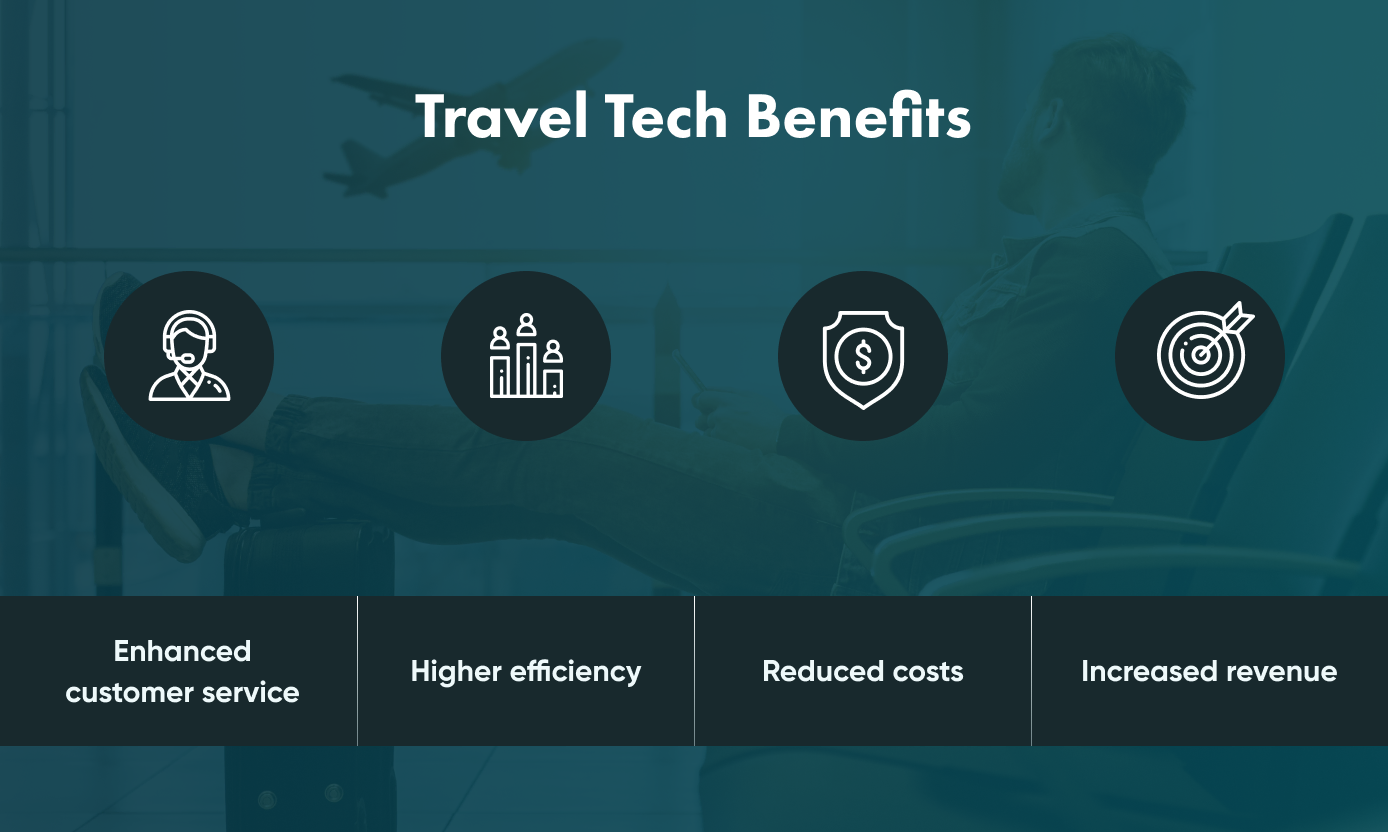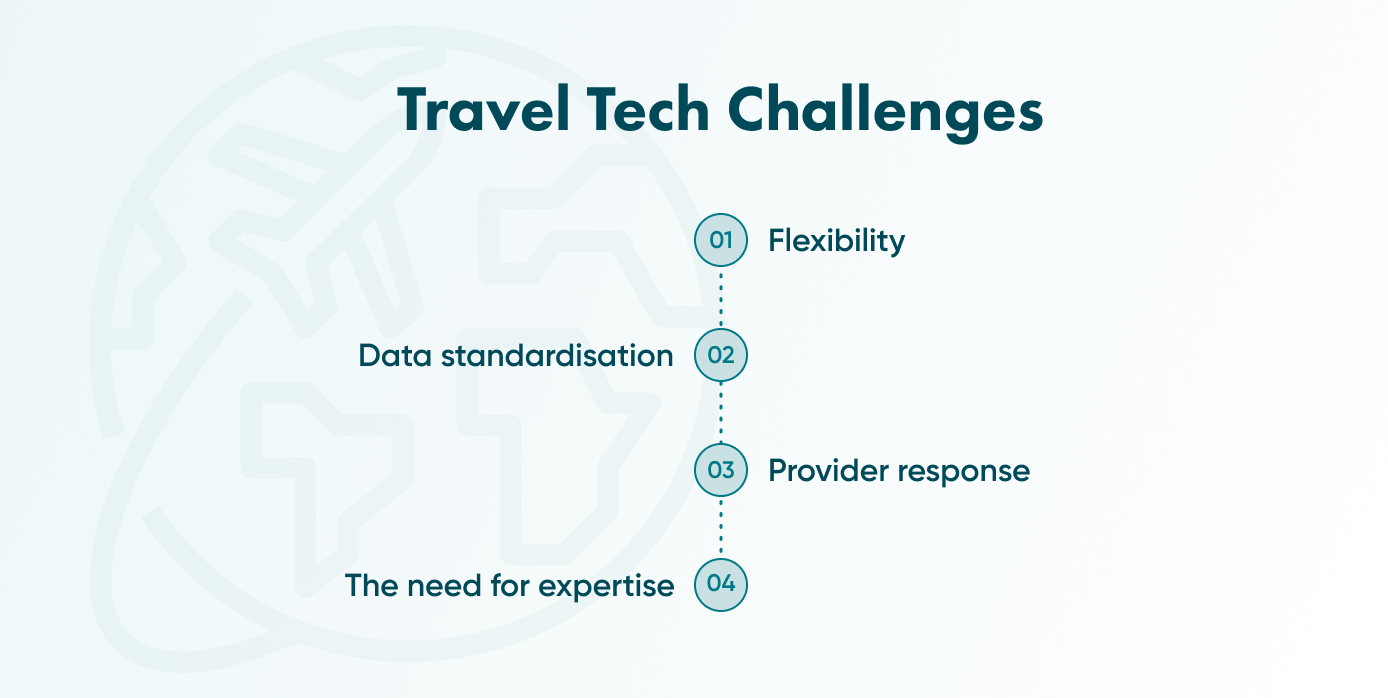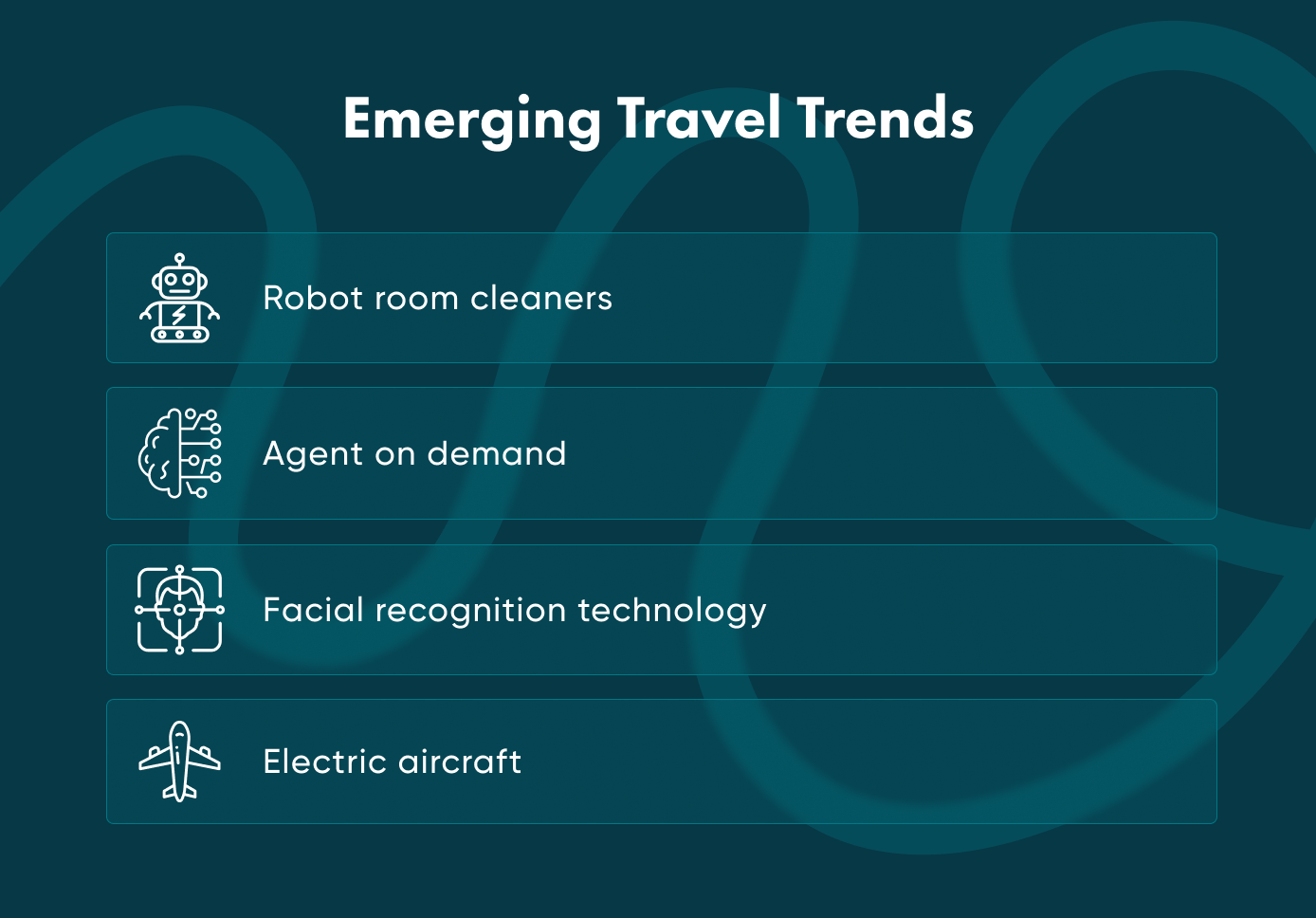A Guide to Technological Development in the Tourism Industry


In the wake of the pandemic, the travel industry is undergoing a supercharged transformation due to the adoption of technological developments. The total travel technology market size is expected to grow annually by 7.5% in the next 5 years, according to a report by the IMARC Group.
From the rise of travel aggregators to behemoths like Booking.com, travel technology has been changing the way we plan and purchase trips, as well as how travel companies keep track of information and market their services.
In this article, you will learn how the tourism industry has been and continues to be changed by technology. We will look at recent advancements and the benefits of adopting new travel technology solutions. Then, we’ll give you an inside scoop on a travel platform built by Go Wombat so you can understand the challenges in creating a tech solution and how to overcome them. Finally, you’ll get an overview of some emerging trends that could start making an impact on the travel sector.
So, let’s embark on a brief journey through the essentials of technology in tourism now.
Technological advancements in the tourism industry
If you talk about trends in tourism these days, the momentum is driven by technological developments that are changing the reality of how all sectors carry out their business, namely AI, VR/AR, and the seemingly never-ending stream of mobile apps.
Examples of technology that have made an impact on the tourism industry
Online reservation platforms, property management systems, and mobile apps have made booking travel easier for consumers and businesses alike. This technological revolution has both made the lives of employees easier and enhanced the experience of customers.

The role of AI in tourism
Artificial intelligence helps consumers by making personalised recommendations, while businesses can segment customers and target marketing campaigns accordingly. Travel companies can also offer customer support 24/7 with AI-outfitted chatbots to field customer queries. And now prospective travellers are leveraging the latest technology in the market of generative AI platforms to help them plan their whole trip based on their budget and preferences.
Virtual and augmented reality in tourism
Without even leaving the comfort of their homes, people in vacation-planning mode can take virtual tours of accommodations and even sites like museums. Also, when visiting their physical location in person, some tourist attractions are beginning to offer an AR experience.
The way we connect with travel and tourism information is becoming more interactive and immersive.
Mobile applications for tourism
Can you imagine travelling these days without a mobile phone? We’d literally be lost without maps applications. Not to mention, we use our phones to buy tickets and make reservations on the go, as well as to check schedules, the weather, our bank balances and even check in to flights. And the list of tourism apps goes on.
Benefits of technology in the tourism industry

More than just blowing wind into the sails of fleeting tourism trends, these latest technological advancements stand to bring long-term value to companies if implemented properly.
If you’re concerned about how to best implement new technology in your business, you can rely on consulting services from Go Wombat. Contact us today.
Improvement in customer service
A great leap forward in the development of tourism is the capacity to connect customers with more personalised options. With online chatbots, companies can field more inquiries and provide support at any time, day or night. And based on previous data, companies can anticipate customer needs before the customer even initiates contact.
Increase in efficiency
With travel tech automating many more tasks that used to be done manually, errors are reduced and processes move more quickly. For example, many more bookings can be made across the globe while check-ins can be done from a phone in a café.
Reduction of operational costs
Such automation leads to minimised overhead by reducing the amount of time spent and human labour required. And as for the role of technology in tourism marketing, departments save on costs by having access to more prospects via new channels in social media and email.
Boost in revenue
In addition to higher margins from cutting costs, advanced search engines lead to a better customer experience, translating to more bookings. And now AI powers dynamic pricing across the tourism system, meaning prices can go up based on demand in real time. All this culminates in more income, if implemented wisely.
In fact, Statista estimates that 74% of all revenue will be generated by online sales in the travel and tourism market by 2027.
Challenges in adopting technology in the tourism industry
To better understand the challenges in tourism sectors and how to overcome them, let’s unpack a case in point from Go Wombat.
To fill you in on the background, a client charged us with creating a service geared toward travel agencies that would allow said agencies to build and sell various services: flights, hotels, car rentals, transfers, and excursions.
Flexibility
One of the main challenges was that each travel agent had a different vision regarding the look, feel, and functionality of their websites. In order to accommodate them, we had to develop a solution that was highly flexible and adaptable.
Data standardisation
For the platform to work, we needed data from different providers. Integrating with various data providers meant differences in data formats and standards.
Because of this, we had to put together a robust mapping system and make the solution sturdy enough to deal with potential disruptions.
Our interactions with major travel agencies provided valuable feedback on the specific data they require and desire access to. Based on this feedback, we developed a standardised data framework for the travel industry, which we integrated into our service.
- Andrii Sokolov, Backend Team Lead at Go Wombat
Response from providers
In this project, we had to work with both large and smaller-scale providers.
With major providers, we experienced delays due to sluggish managerial processes or unannounced updates that structurally modified their API.
That said, dealing with the smaller guys proved more direct. They were attentive to our questions and even tailored their APIs to our needs.
In the end, the flexible mapping system our team developed effectively tackled the different API responses as well as the varying datasets.
The need for expertise
Thankfully, our previous experience in aggregating data from different providers enabled us to come up with solutions that worked for this client’s vision.
Andrii explains how our understanding of information technology in tourism proved critical to the successful development of this travel industry solution:
Prior to initiating the project, we thoroughly planned and defined the technology stack and architecture to be used throughout the development process, both for the minimum viable product (MVP) and production stages.
This meticulous planning enabled us to optimise development time and ensure a smooth implementation, mitigating potential issues that could have arisen during the course of development.

What the tourism industry needs now
Based on what we learned from this complex project, we can identify some prevalent and pressing issues in today’s tourism and travel industry.
- From the business perspective, companies are looking for solutions that make it easier for them to sell comprehensive packages which include a range of travel and hospitality-related services, including accommodation, transportation, and activities.
- As far as the development side of things, we’ve seen how data standardisation is crucial. But that’s not all. According to Andrii’s technological analysis, there are some other key things to consider:
- Data security
- Service flexibility (allowing for individual customisation, payment system selection, and travel package builders)
- System resilience
- Data processing speed
- Scalability
For more about data challenges in the travel tech scene, read our CEO’s insights.
The future of technology in the tourism industry
Not only will the above-mentioned trends like AI and AR/VR continue to change the industry as they evolve and spin off into new applications, but wait – there’s more on the horizon for the travel and tourism business.
An overview of current technology trends
Here’s some emerging trends in travel to be on the lookout for:
- Do not be disturbed, but Chinese hotel giants Huazhu and BTG Homeinns are already investing in and/or experimenting with robot room cleaners. The reasons for implementing this technology in the hospitality industry include reducing costs and keeping guests safer.
- Saying goodbye at the airport can be a downer, but bidding adieu to standing in lines there would be a relief. United Airlines has introduced a service called “Agent on demand”, where a QR code you scan at the airport connects you with a customer service representative by videochat.
- Although it’s facing pushback due to privacy concerns, there is the possibility of using more facial recognition technology at airports. Proponents claim the upside to be an uptick in travel safety.
- Electric vehicles continue to take off. Literally. Now electric aircraft are being tested and unveiled by companies like Eviation, AeroTEC, and MagniX, as well as Airbus’s eVTOL.
The potential impact of emerging technologies
Such technologies could mean more efficient room service and customer service in general. Processes that required more steps before could be sped up further. We could also benefit from causing less harm to the environment as we continue to enjoy the conveniences of modern travel.
The need for continued investment in technology
As with any nascent technology, these aforementioned forerunners will probably face hiccups, bugs, and just downright clunkiness. That’s why these travelling trends will need investment so that they can improve with each iteration as the early adopters give their feedback.
Not to mention, they require careful planning, programming, software integrations, and implementations – all of which fall under the domain of custom software developers and consultants like Go Wombat.

Unlock Success with Premium Software Development
Contact us


Conclusion
Summary
We’ve covered some technological advancements in travel and their benefits. We’ve also taken a look at the challenges of adopting tourism technology and how Go Wombat helps companies overcome them, taking one of our proud projects as an example. This led us to some insight into the industry’s current needs, followed by a glimpse into the potential future of tourism.
Reflections on the current state
When it comes to travel, many aspects keep getting faster and easier. But there’s still obvious room for improvement in getting customer service issues resolved smoothly and finding the right options to more closely match customer preferences.
Companies in the travelling sector have access to a lot of data already and continue to accumulate more. But how to deal with that data remains an issue.
Those that know how to handle substantial amounts of data and harness its power will be able to offer more personalised options to their customers and keep them coming back, leading to a higher ROI.
Final thoughts on the future
No one can predict exactly how current trends and emerging tech will pan out, but you can make your organisation more agile and resilient as you face both known challenges and those yet to be seen.
At Go Wombat, we understand the ins-and-outs of state-of-the-art technology and versatile frameworks so you don’t have to. What’s more, we draw on our years of experience to analyse your business, architecting the solution that best fits your requirements.
As strange and/or wonderful as the future of the tourism industry gets, we are no strangers to the custom software solutions that businesses will continue to need in order to thrive in it.
Ready to futureproof your company with Go Wombat? Let’s start talking.
How can we help you ?






